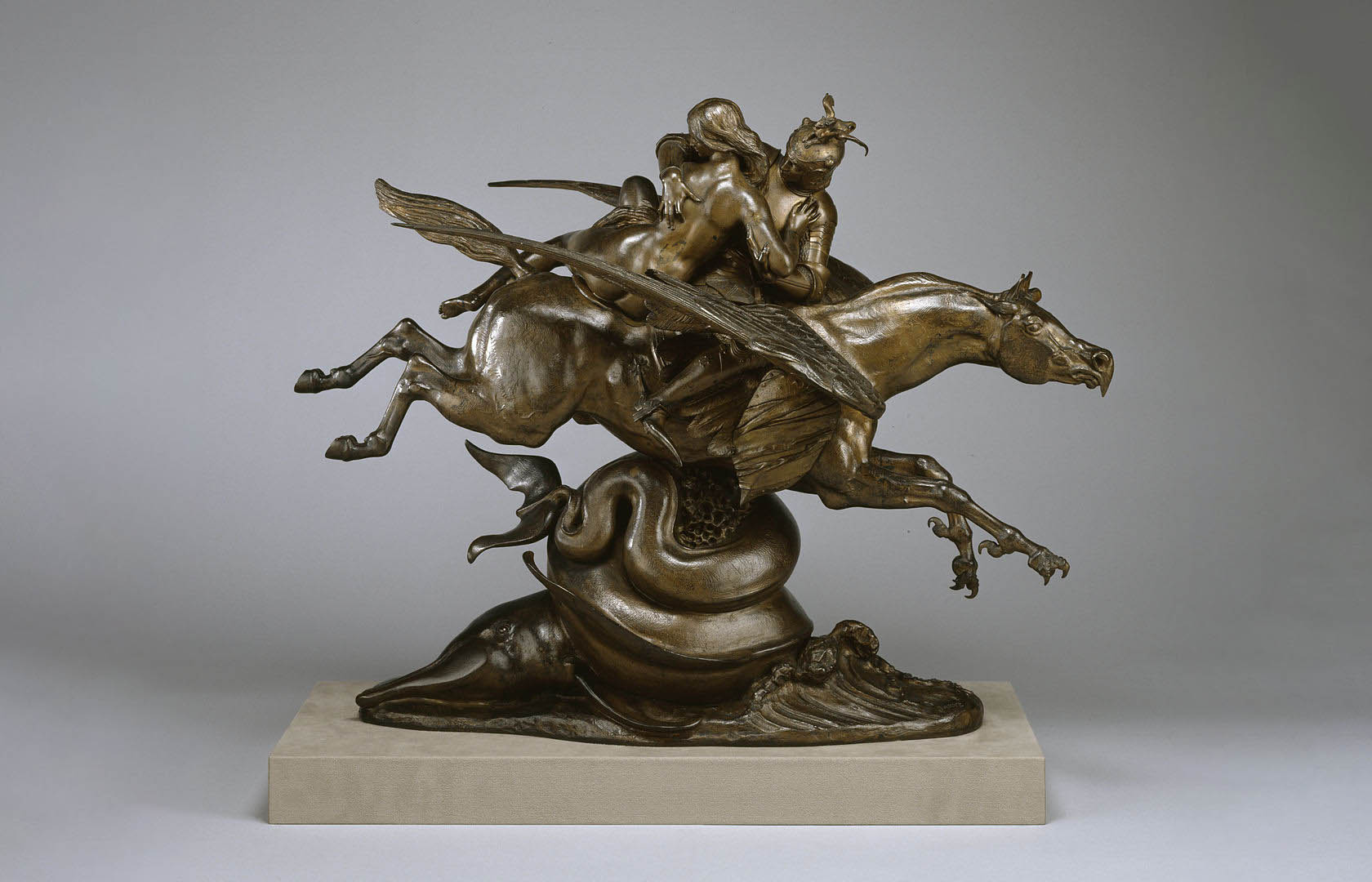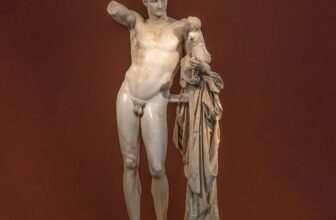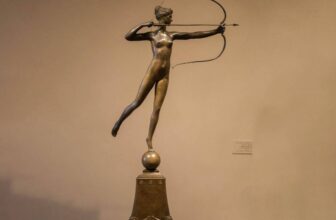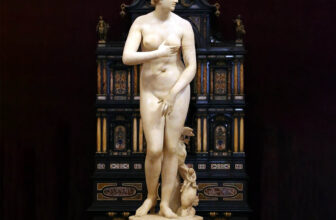
Antoine Louis Barye: Master of Wild Majesty Sculpture
Antoine Louis Barye is a name that carries the weight of untamed nature, heroic struggles, and timeless artistry in bronze. For nearly two centuries, collectors, curators, and art lovers have admired his works not only for their technical mastery but for their intense vitality, the sense that the beasts he sculpted could spring to life at any moment. Considered the father of the Animalier movement, Barye elevated animal sculpture from decorative craft into the realm of fine art, turning roaring lions, rearing horses, and mythological combats into symbols of power and beauty.
To fully appreciate Barye’s contribution to art, one must travel through his life, his most famous sculptures, his working methods, the locations where his works can be seen today, and the market value his bronzes command in modern times. This journey reveals a man whose sculptures were more than mere representations of animals, they were allegories of nature’s eternal struggles and triumphs.
The Early Life of Antoine Louis Barye
Born in Paris in 1796, Antoine Louis Barye grew up during the turbulent years following the French Revolution. His father was a goldsmith of Lyonnais origin, and young Barye apprenticed in the family craft. From an early age, he became familiar with metals, tools, and the precision required for delicate work. But unlike many goldsmith apprentices, he was drawn to the raw vitality of nature rather than ornamental forms.
In 1816, Barye entered the École des Beaux-Arts in Paris, where he trained under master sculptors such as François-Joseph Bosio and painter Antoine Jean Gros. At first, he aimed for recognition in the neoclassical style favored by the academy. However, his true passion lay in the study of animals, anatomy, and movement. He spent countless hours sketching at the Jardin des Plantes, the Paris zoo, where he observed lions, tigers, elephants, and other exotic beasts. This deep observation would later define his sculptures.
By the 1820s, Barye abandoned classical subjects and turned to animals, living and mythological, carving out a niche that no other sculptor of his time had claimed. He became the leading animalier of the Romantic movement, a title that has never left him.
What Antoine Louis Barye Is Known For
Antoine Louis Barye is best known as the pioneer of animal sculpture in 19th-century France. Unlike earlier sculptors who often depicted animals in static, decorative poses, Barye infused his works with drama, movement, and emotional intensity. His lions roar with ferocity, his tigers spring in mid-attack, and his mythological creatures embody the struggle between nature and human ambition.
Key aspects of what he is known for:
The Animalier Style – Barye is considered the founding figure of the Animalier school, which emphasized realistic yet dynamic representations of animals.
Anatomical Accuracy – His time at the Jardin des Plantes gave him intimate knowledge of animal anatomy, reflected in the precision of muscles, bones, and posture in his bronzes.
Romanticism in Sculpture – He was part of the broader Romantic movement, which valued emotion, grandeur, and the sublime aspects of nature.
Bronze Casting Innovations – Barye perfected techniques of small-scale bronze casting, making sculptures more widely available to collectors.
Symbolism of Nature – His works often served as allegories for power, struggle, and survival, resonating with the turbulent political climate of 19th-century France.
Antoine Louis Barye’s Most Famous Sculptures
Barye created dozens of works, ranging from small table-top bronzes to monumental public sculptures. Among his most famous and celebrated are:
1. Lion Crushing a Serpent (1832)
Perhaps Barye’s most iconic work, Lion au Serpent depicts a powerful lion pinning down and killing a writhing serpent. Exhibited at the Paris Salon in 1833, it caused a sensation. The piece was interpreted as an allegory of triumph, nature’s eternal battle between strength and treachery. The French state purchased a bronze cast, and a monumental version still stands in the Tuileries Gardens in Paris.
2. Jaguar Devouring a Hare (1850)
Another masterpiece of violent natural struggle, this sculpture captures a jaguar crouched over its prey, muscles tense and jaws clamped. The brutal realism shocked some contemporaries but won admiration for its vitality. It remains one of Barye’s most reproduced and collected works.
3. Theseus and the Minotaur (1843–44)
Barye was not limited to naturalistic animals; he also ventured into mythological subjects. In Theseus Slaying the Minotaur, he shows the Greek hero overpowering the half-man, half-bull beast. The sculpture combines his fascination with anatomy, both human and animal, with dramatic storytelling.
4. Tiger Attacking a Gavial (1831)
This striking composition shows a tiger locked in mortal combat with a crocodile-like Indian gavial. The dynamic struggle and interlocking forms make it one of Barye’s most technically ambitious bronzes.
5. Seated Lion (1847)
Unlike his dramatic battle scenes, Barye also created calmer yet majestic works such as the Seated Lion. This sculpture reveals the quiet dignity of the king of beasts, capturing strength through stillness rather than action.
6. Napoleon III’s Public Commissions
During the Second Empire, Barye was appointed as official sculptor to Napoleon III. He created monumental works such as bronze groups for the Louvre, the Pont Neuf, and the Tuileries gardens, cementing his status as a national artist.
How Antoine Louis Barye Made His Sculptures
Barye’s process reflected both craftsmanship and artistry:
Observation and Sketching – He spent years studying animals at the zoo and dissecting specimens to understand anatomy. He filled sketchbooks with drawings that served as references for his sculptures.
Modeling in Clay or Wax – He first shaped his ideas in pliable materials, capturing the energy of movement quickly.
Plaster Casting – The clay models were turned into plaster casts, which allowed refinement of details.
Bronze Casting – Barye relied on the lost-wax casting method (cire perdue), a traditional technique where the wax model is melted away and replaced with molten bronze.
Chasing and Patination – After casting, Barye personally worked on the surface, adding details with chisels and applying chemical patinas for depth of color.
Series Production – Unlike many of his contemporaries, Barye often made small bronzes intended for private collectors. These editions spread his fame widely and made his works accessible.
His technical mastery was so great that even rival sculptors and critics, who initially dismissed animal sculpture as minor art, eventually recognized his genius.
The Value of Antoine Louis Barye’s Sculptures
The market for Barye’s bronzes has remained strong since the 19th century. Prices vary widely depending on size, subject, condition, and provenance.
Small bronzes such as table-top lions or horses can range from $5,000 to $30,000 at auction.
Major works like Lion Crushing a Serpent or Jaguar Devouring a Hare have fetched upwards of $100,000–$300,000.
Rare casts or early proofs from Barye’s lifetime are especially valuable, sometimes exceeding half a million dollars.
Monumental bronzes, which are usually in museums or public spaces, are considered priceless cultural treasures.
Collectors prize his works for their combination of artistic merit, historical significance, and enduring appeal. As a result, Barye remains one of the most collected 19th-century sculptors.
Locations of Antoine Louis Barye’s Sculptures
Barye’s legacy lives on in museums, galleries, and public spaces across the world. Some of the most significant locations include:
Louvre Museum, Paris – Houses many of Barye’s bronzes and models.
Musée d’Orsay, Paris – Displays a rich collection of Romantic sculptures, including Barye’s animal groups.
Tuileries Gardens, Paris – Monumental bronze of Lion Crushing a Serpent still stands.
Pont Neuf, Paris – Features decorative sculptures created under Napoleon III’s commissions.
Walters Art Museum, Baltimore – One of the largest collections of Barye bronzes in the United States.
Metropolitan Museum of Art, New York – Holds several of his masterpieces, including Theseus and the Minotaur.
Museum of Fine Arts, Boston – Displays a variety of Barye’s works.
Private Collections Worldwide – Many of his smaller bronzes circulate in private hands, cherished by collectors.
The Enduring Legacy of Antoine Louis Barye
Barye died in 1875, but his influence continued long after. His students, including Auguste Rodin in his early years, admired his dedication to anatomical truth and expressive power. The Animalier movement he pioneered became a defining genre of 19th-century sculpture.
Today, Barye’s works remain as fresh and arresting as when they were first exhibited. His lions and tigers do not merely represent animals; they embody the struggles of existence, the dignity of nature, and the timeless human fascination with the wild.
Collectors and scholars continue to study his methods and celebrate his ability to transform bronze into living, breathing creatures. Whether standing before the monumental Lion Crushing a Serpent in Paris or holding a small bronze of a rearing horse, one feels the pulse of life that Barye so masterfully captured.
Antoine Louis Barye was more than a sculptor of animals; he was a poet of bronze, a visionary who gave form to the primal forces of nature. His most famous sculptures, Lion Crushing a Serpent, Jaguar Devouring a Hare, Theseus and the Minotaur, stand as testaments to his genius. Known for his mastery of the Animalier style, he created works that combined anatomical precision with emotional intensity.
Through his careful process of modeling, casting, and patination, Barye turned observation into artistry. Today, his sculptures command high prices on the art market, ranging from thousands to hundreds of thousands of dollars, and they are displayed in major museums and public spaces across the globe.
The story of Antoine Louis Barye is the story of a man who found wild beauty in the world around him and immortalized it in bronze. His lions still roar, his tigers still pounce, and his legacy as the master of animal sculpture remains unchallenged.




